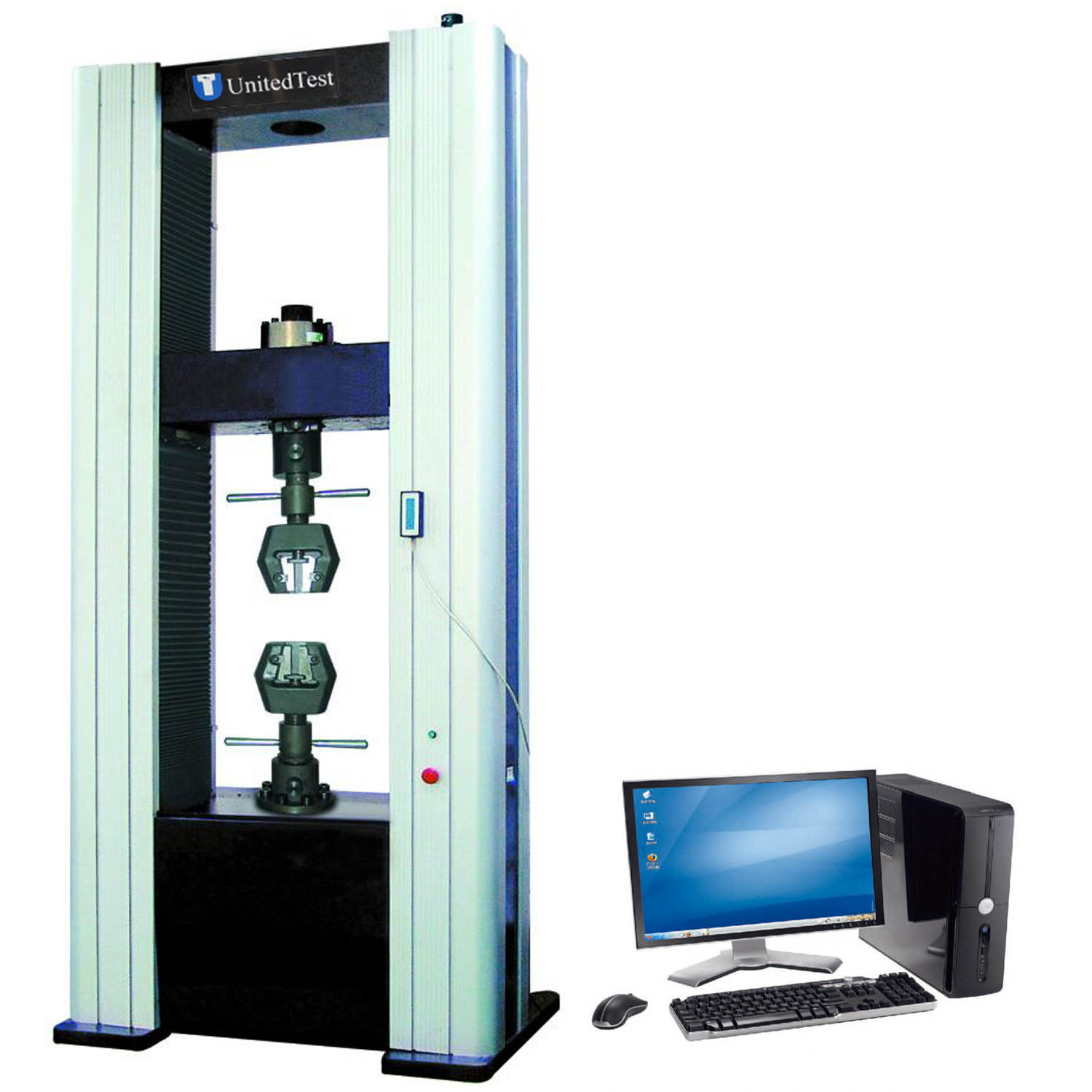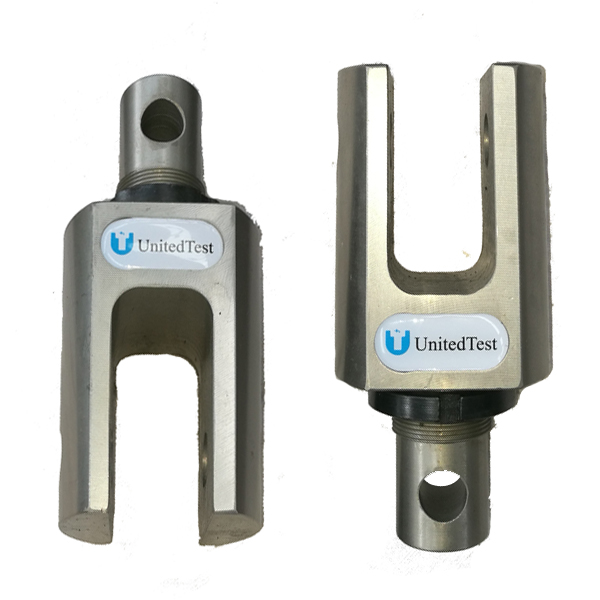- Universal testing machine
- Fixtures
- Medical/Biomedical device
- Vehicles motorcycle
- Compression/Flexural test
- Hardness tester
- Impact testing machine
- Torsion testing machine
- Abrasion & wear tester
- Plastic & Pipe testing
- Tensiometer / Goniometer
- Erichsen cupping tester
- Other Testing Equipment
- Grinding & polishing machine
- Spring testing machine
- Introduction
- Specification
- Accessories
- Standard
- LEAFLET & VIDEO
- Contact Us
Pipe Apparent Hoop Tensile Testing Machine ASTM D2290
What's the split disk test for plastic or reinforced plastic pipes hoop tensile test?
The apparent hoop tensile testing of plastic or reinforced plastic pipes using the split disc method is a standard testing procedure for determining the apparent hoop tensile strength of plastic pipes under axial tensile load. This method loads the pipe using a split disc grip to simulate the stress state under actual use conditions, and is suitable for reinforced thermosetting resin pipes and thermoplastic pipes.
What Is the standard ASTM D2290?
ASTM D2290 is a standard test for measuring the apparent tensile strength of plastic pipe test specimens. ASTM D2290 features a fixture that includes a holder with various inserts that are sized to match the range of pipe inside diameters that need to be tested. The inserts transfer the load and allow the pipe to be pulled apart to produce “apparent tensile strength”. It is an apparent tensile strength, rather than a true tensile strength because of a bending moment imposed during the test at the split between two split disk test fixtures. This moment is induced by the change in contour of the ring between the two disk sections as they separate. Apparent tensile strength test results are available at yield, rupture, or both.
Testing Principle
The mechanical performance indicators such as elastic limit, elongation, and elastic modulus of the material are determined through axial tensile load. The test results can be used in research and development, engineering design, and quality control fields.
Testing Method
Pre-treatment: Treat the pipes according to standard requirements for temperature, humidity, and other conditions.
Loading Method: Apply axial tension using a split disc grip until the pipe ruptures.
Data Calculation: Calculate the apparent circumferential tensile strength based on the load at fracture and the dimensions of the pipe. It should be noted that this testing method requires attention to: different programs correspond to different pipe diameters (e.g., Programs A, B, and C are applicable to reinforced thermosetting pipes, thermoplastic pipes of any size, and thermoplastic pipes with a nominal diameter ≥ 4 inches, respectively), and the test results reflect the mechanical performance close to the testing conditions, not suitable for scenarios that differ significantly from actual use conditions.
Scope of Application
This method is applicable to reinforced thermosetting resin pipes (such as glass fiber reinforced plastic pipes) and extruded thermoplastic pipes (such as polyethylene, polybutene, etc.), covering pipes with diameters ranging from 4 inches to 8 inches.
UnitedTes UT1036H Pipe Apparent Hoop Tensile Testing Machine consists of a main unit, hydraulic power system, computer measurement and control system, and electrical control system. It uses an electro-hydraulic servo control system capable of meeting the three closed-loop control requirements for load, deformation, and displacement, and can smoothly switch according to the set program to meet the testing requirements of different materials.
This product has a reasonable structure and is aesthetically pleasing. The main unit has high rigidity and generates minimal ground impact during tests, possessing hardware and software protection functions that ensure safety and reliability. The main unit employs hydraulic wedge-type clamps with an upper cylinder single-space structure and bi-directional servo cylinder control, achieving closed-loop control for tensile/compression tests in the lower space while adhering to ergonomic principles for comfortable operation. The design of the jaws allows for parallel insertion of specimens, minimizing the need for frequent adjustments of the test space during the testing process. The main unit features a steel structure frame with rigid connections, directly utilizing the piston's lift to adjust the test space, making it convenient and efficient. The measurement and control system comprises a measurement and control card, servo valves, load sensors, displacement sensors, extensometers, and a computer, together forming a closed-loop servo control system that can manually or automatically control the test process by programming. It automatically measures test parameters such as force, displacement, and deformation, and can analyze various test results automatically or manually; test reports can be edited according to user needs and equipped with a network interface to enable the transmission of experimental data.
Self-Balancing Door-Type Reaction Frame
Functions and Basic Parameters:
1.Provides a multifunctional integrated reaction frame for structural testing.
2. The multifunctional integrated reaction frame is designed based on the self-balancing concept.
3. The vertical bearing capacity design value of the main beam is 250kN within an adjustable loading range.
4. The reaction frame can withstand a bidirectional horizontal load of 200kN and can resist horizontal reactions generated during eccentric column tests and complex joint loading tests
5. The reaction frame uses Q345-B structural steel.
The sensor uses a double-flange wheel pantype sensor, installed flat, with a contact surface suitable for heavy load and large impact experiments. The column is secured with a pre-tightening nut, effectively ensuring that the column will not become loose due to severe impacts during the experiment.
The two slip fixtures are fixed on the finely processed guide surface, and the running direction is constrained by the guide rails. When stressed in different directions, there will be no deflection, ensuring that the sample during the tensile process experiences a uniform external tensile force.

Main specification:
Model | UT1036H |
Max. load | 100KN/200KN/300KN |
Measuring force range | 3~200KN |
Accuracy of load | ±0.5% of indicated value |
Accuracy of deformation | ±0.5%, resolution: 0.005mm |
Deformation measuring resolution | 0.001mm |
Constant load, Range | 0.4%~100%FS |
Hoop tensile fixture max. diameter | 2600mm pipe |
Hoop tensile fixture groove suitable for pipe range | 300mm ~ 2600mm pipe |
Max. tensile space | 1800mm |
Piston stroke | 500mm |
Max. working pressure | 20Mpa |
Max. piston speed | 150mm/min |
Frame type | Self-Balancing Door-Type Reaction Frame |
Two column effective distance | 1300 (Width)*550 (depth) mm |
Dim. of frame | 2400×1250×3300mm |
Dim. of control box | 1120×600×920mm |
Weight of frame | 3800kg |
Weight of hydraulic power unit | 400kg |
Weight of 2600mm split hoop fixture | 4600kg |
Power | 380V, 50HZ, 3 phase |













